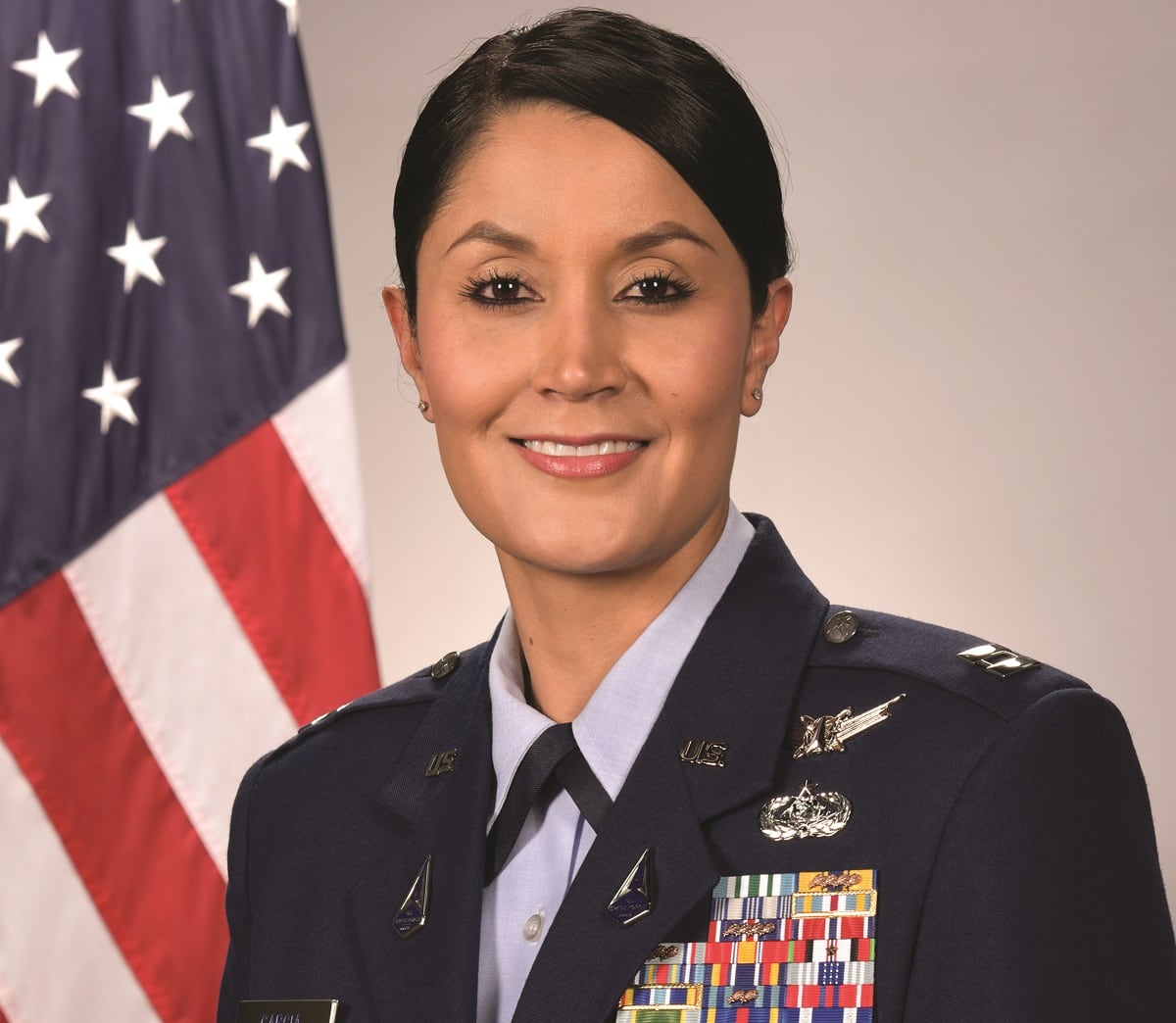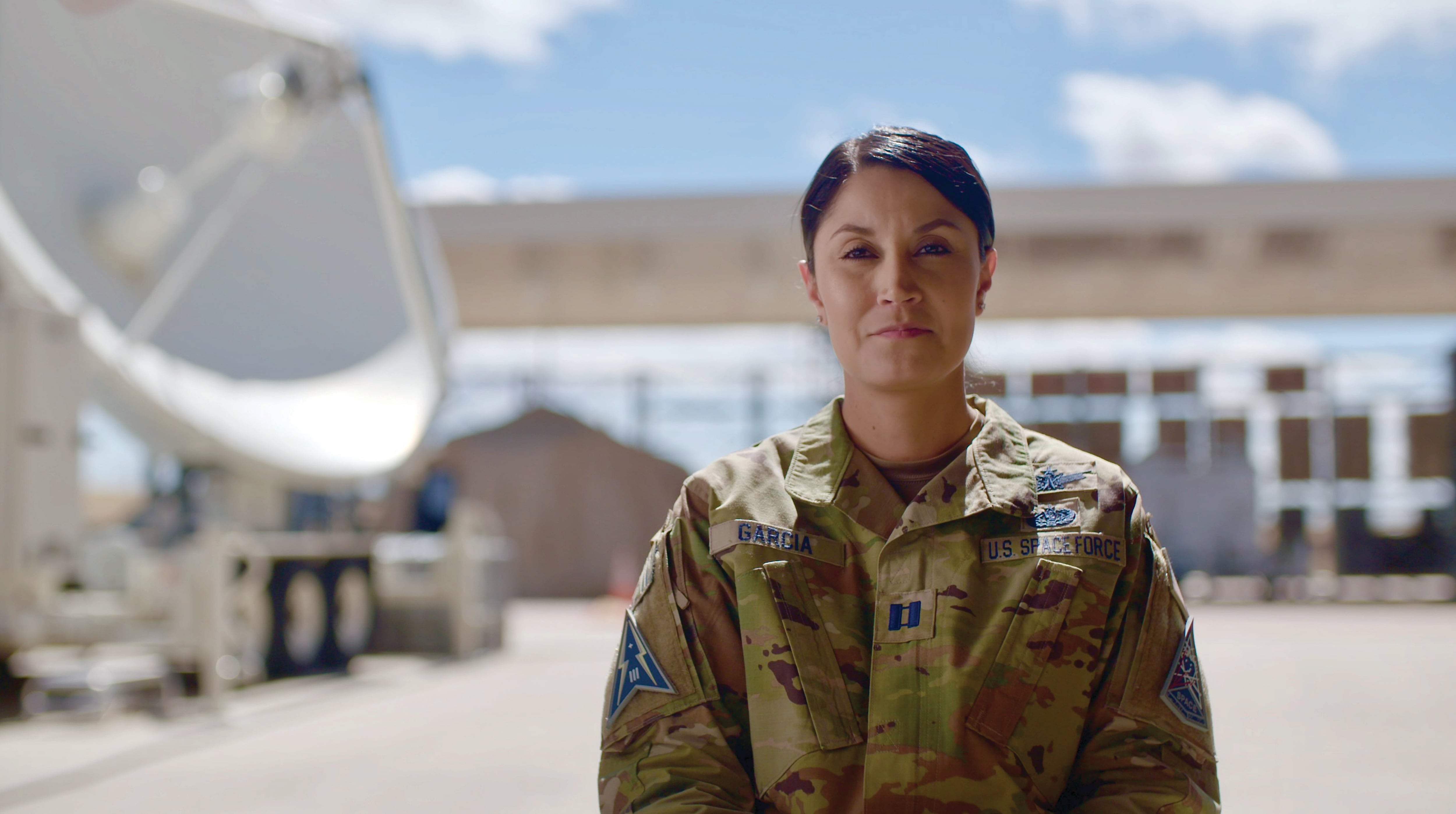Early last year, as Russia mounted its all-out assault on Ukraine, the U.S. Space Force quietly built a shadowy electronic warfare enterprise in the remote European countryside to secure U.S. satellite networks.
That effort, led by Capt. Victoria Garcia, safeguarded the travel of two U.S. Cabinet secretaries to Kyiv, deployed a brand-new EW system for the first time and set a new standard for how the Space Force operates in far-flung parts of the world.
Garcia’s role in leading the first space EW deployment to Europe at the onset of the continent’s largest military crisis in over two decades earned her Military Times’ inaugural Guardian of the Year award.
Garcia, 37, of El Paso, Texas, is now a speechwriter at Space Operations Command, the Space Force branch in charge of organizing its combat units.
Garcia, a Mexican immigrant, rose through the Air Force’s enlisted ranks before earning her officer commission and transferring into the Space Force. The four-month deployment was a chance for her to do what she’d always dreamed of: lead troops in the field.
Her unit, the 4th Electromagnetic Warfare Squadron at Colorado’s Peterson Space Force Base, began hearing talk of a potential deployment to Europe in December 2021, as Russia was amassing hundreds of thousands of troops on Ukraine’s border.
What’s more, U.S. Space Command — the organization that directs Space Force troops in daily missions around the world — wanted to set up a new combat detachment from scratch, in an area where it hadn’t previously operated.
With Christmas around the corner, that task fell to Garcia.
As the squadron’s mission support director, she knew how to run the secretive hardware that stops enemies from interfering with U.S. and allied use of the electromagnetic spectrum. That keeps lines of satellite communications open, allows the U.S. to collect intelligence from space and ensures foreign adversaries don’t intercept classified information.
She also understood the massive logistical effort needed to operate those systems in the field, far from an established base like Peterson.
“What’s the security going to look like?” she said. “What type of radio frequency transmission support are we going to need for that system? What type of comms support, like plugging in computers, phones? … How are we going to get generator power to this location? How are we going to cool it?”
Garcia got the nod to serve as deployment commander and began building her team of intel specialists, equipment sherpas, cyber experts and more — 54 troops across 15 career fields. The 54-person team left for Europe on Feb. 2, less than two months after planning began in earnest.
The group first headed to Ramstein Air Base in Germany, where they packed pallet after pallet of equipment onto five C-130 Hercules airlifters for the final leg of the journey to their undisclosed location. Their destination offered only a basic runway that couldn’t bear the weight of the larger cargo jets they’d typically use.

Garcia and a few others arrived on site early to test a new, $2 million EW system, built by a rapid reaction team to speed cutting-edge technologies to the field for the first time. She declined to answer how the system differed from existing electronic warfare tools, or what gap in military capabilities it filled.
Over the course of 30 hours, the team turned two hardened, Soviet-era aircraft hangars — a 45-minute drive from where they lived on one of the host country’s military bases — into makeshift command centers fit for classified operations.
Wiring crisscrossed open fields; without the security afforded by a larger base, their hardware needed to be guarded around the clock. Garcia said she was aware of threats to the facilities but declined to provide details.
“It was ... kind of madness,” she said. “You have people directing [network] fiber, pulling cases and building the system. … We would have to drive out two to three miles into the larger town to go get larger pieces of wood and things like that.”
Once their stronghold was up and running, the unit tracked 84,000 “network events” over 3,000 hours in the field from February to May.
“We conducted a lot of passive operations,” Garcia said. “We had two systems at that site, which were about a mile apart, overseeing the electromagnetic spectrum in this area of this country.”
That April, Secretary of Defense Lloyd Austin and Secretary of State Antony Blinken’s three-day trip to Ukraine and Poland — their first since the war began — put the detachment’s capabilities to the test.
Being in Europe allowed the unit to watch and manipulate parts of the spectrum that they wouldn’t otherwise have access to, Garcia said. Those troops could intervene if they detected any electronic interference that could jeopardize the defense secretary’s safety, or disrupt his ability to communicate.
“If you think of it like an overwatch surveillance mission, we were there to answer the call … if things went south,” she said.
As part of the trip, Austin and Blinken announced a total of $713 million in foreign military financing for Ukraine and 15 allied and partner countries, cash that countries could use to purchase any needed supplies.
In their down time, the guardians would sprint around the flight line for “Sunday Fun-day Run-day,” barbecue and hitch rides on visiting U.S. Army helicopters.
In November, Garcia received one of the inaugural U.S. Space Force Polaris Awards for guardians at the field command level. She received the Polaris Courage Award as a representative of Space Operations Command.
Garcia has continued to follow the war in Ukraine and kept up with her old unit, now called the 44th Electromagnetic Warfare Combat Detachment, as it has expanded its mission. She’s found it difficult to disconnect from the venture to which she gave so much time and sweat.
“There’s a deep appreciation of what you do as a Space Force guardian, when you know the capabilities that you operate are feeding a joint fight,” she said. “You get the satisfaction of, ‘I’m truly part of something that is helping mankind.’”
See all Military Times’ 2023 Service Members of the Year honorees.
Rachel Cohen is the editor of Air Force Times. She joined the publication as its senior reporter in March 2021. Her work has appeared in the Washington Post, the Frederick News-Post (Md.), Air and Space Forces Magazine, Inside Defense, Inside Health Policy and elsewhere.




